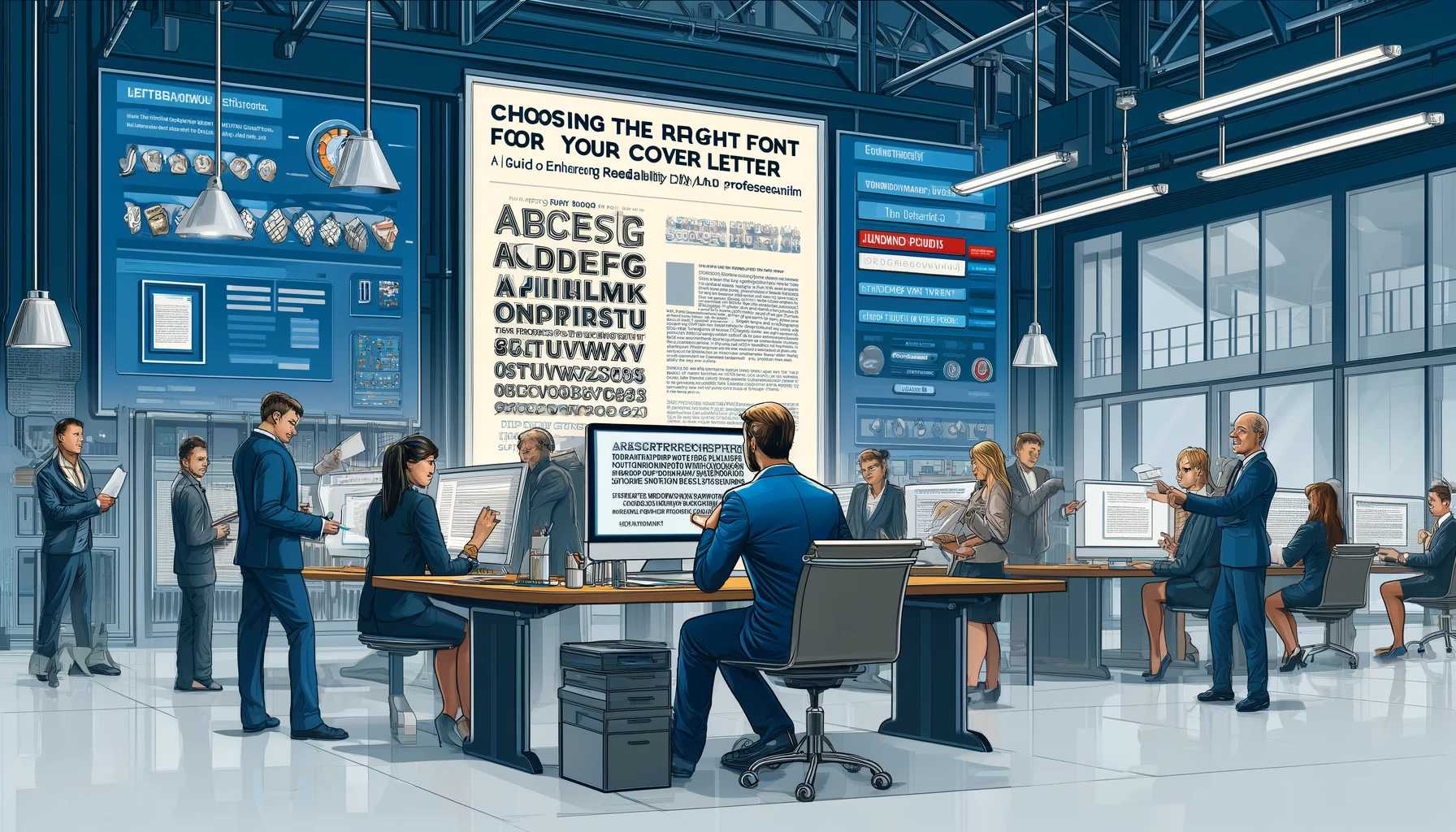Choosing the Right Font for Your Cover Letter: A Guide to Enhancing Readability and Professionalism
When it comes to crafting a compelling cover letter, every detail matters. From the content and structure to the design and layout, each element plays a crucial role in creating a positive impression on potential employers. Among these, the choice of font may seem like a minor detail, but it can significantly impact the readability and overall presentation of your cover letter. In this blog post, we'll explore how to choose the right font for your cover letter to enhance readability, professionalism, and visual appeal.
Understanding the Importance of Font Choice
Readability and Clarity
The primary purpose of a cover letter is to communicate your skills, experience, and qualifications effectively to potential employers. Choosing a font that is easy to read and clear can help ensure that hiring managers can quickly and effortlessly understand your content, making it more likely that they will read your cover letter in its entirety and consider you as a serious candidate for the position.
Professionalism and Presentation
The font you choose for your cover letter contributes to its overall professionalism and presentation. A well-chosen font can add a touch of sophistication and elegance to your document, while an inappropriate or unprofessional font can detract from its quality and impact. Opting for a clean, classic, and professional font can help you create a polished and professional impression that aligns with industry standards and expectations.
Consistency and Cohesion
Consistency in font choice throughout your cover letter and resume can enhance cohesion and visual appeal. Selecting complementary fonts for headings, subheadings, and body text can help create a harmonious and balanced look that guides the reader through your document and highlights the most important information effectively.
Key Factors to Consider When Choosing a Font
Legibility and Readability
Prioritize legibility and readability when choosing a font for your cover letter. Opt for fonts that are clear, clean, and easy to read, both in print and on screen. Avoid overly decorative or stylized fonts that may be challenging to read or distract from your content, and opt for classic and timeless fonts that are widely accepted and recognized.
Industry Standards and Expectations
Consider industry standards and expectations when selecting a font for your cover letter. Different industries and roles may have specific preferences and requirements for font styles and sizes. For example, creative fields may allow for more flexibility and creativity in font choice, while corporate environments may prefer more traditional and conservative options.
Compatibility and Accessibility
Choose fonts that are compatible across different devices, platforms, and software to ensure accessibility and consistency. Opt for widely available and universally recognized fonts like Arial, Times New Roman, Calibri, or Helvetica, which are supported by most operating systems and applications and ensure that your cover letter looks consistent and professional regardless of where it's viewed.
Popular Fonts for Cover Letters and Their Characteristics
Arial
Arial is a clean and modern sans-serif font that offers excellent readability and a professional appearance. It's widely used in business and corporate environments for its clean lines, balanced proportions, and neutral design, making it a versatile choice for various industries and roles.
Times New Roman
Times New Roman is a classic and traditional serif font that has been a staple in print and publishing for decades. It's known for its readability and professionalism, making it a popular choice for formal documents like cover letters and resumes in corporate and academic settings.
Calibri
Calibri is a modern and elegant sans-serif font that offers a clean and sophisticated appearance. It's designed for clarity and readability on screen and in print, making it a popular choice for cover letters and resumes across different industries and roles.
Helvetica
Helvetica is a versatile and timeless sans-serif font that offers a clean, simple, and professional appearance. It's widely recognized and respected for its neutrality and readability, making it a popular choice for cover letters and resumes in various industries and settings.
Tips for Choosing the Right Font for Your Cover Letter
Test and Compare Options
Test and compare different fonts to find the one that best suits your needs and preferences. Print out samples of your cover letter using different fonts, and compare them side by side to evaluate readability, appearance, and overall impact. Choose the font that looks clean, professional, and easy to read both in print and on screen.
Consider Font Size and Spacing
Pay attention to font size and spacing when selecting a font for your cover letter. Opt for a font size between 10 and 12 points for the body text, and slightly larger for headings and subheadings to ensure readability and visual appeal. Use consistent spacing between lines and paragraphs to enhance readability and presentation.
Seek Feedback and Review
Seek feedback from trusted friends, family members, or mentors to review your cover letter and provide constructive criticism and suggestions for improvement. A fresh perspective can help you identify areas for refinement and ensure that your cover letter is polished, professional, and ready to impress potential employers.
Conclusion
Choosing the right font for your cover letter is an essential step in crafting a compelling and effective document that resonates with hiring managers and leaves a lasting impression. By considering readability, professionalism, industry standards, and personal preferences, and following the tips and guidelines outlined in this blog post, you can select a clean, classic, and professional font that enhances the presentation of your cover letter and helps you stand out from other candidates.
So, whether you opt for Arial's modern simplicity, Times New Roman's timeless tradition, Calibri's elegant sophistication, or Helvetica's versatile neutrality, choose a font that aligns with your industry, job role, and personal style, and ensures readability, consistency, and professionalism throughout your cover letter. Here's to choosing the right font for your cover letter, enhancing readability and presentation, and making a positive and lasting impression on potential employers as you pursue your career goals and aspirations with confidence, clarity, and determination









